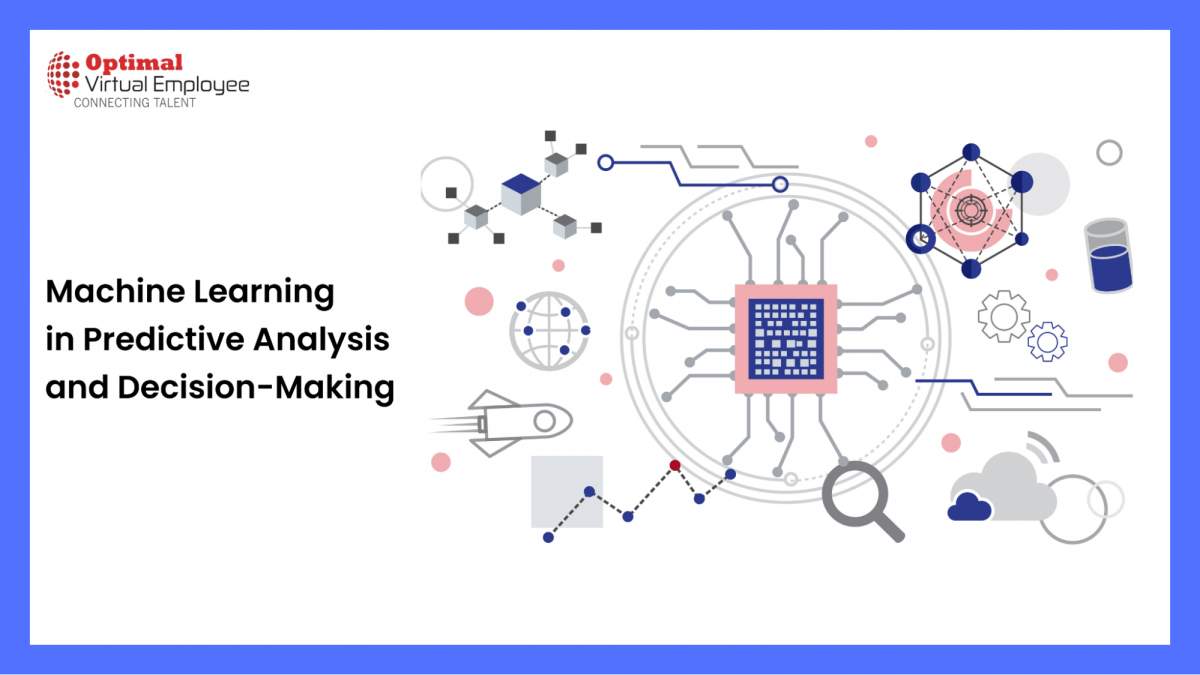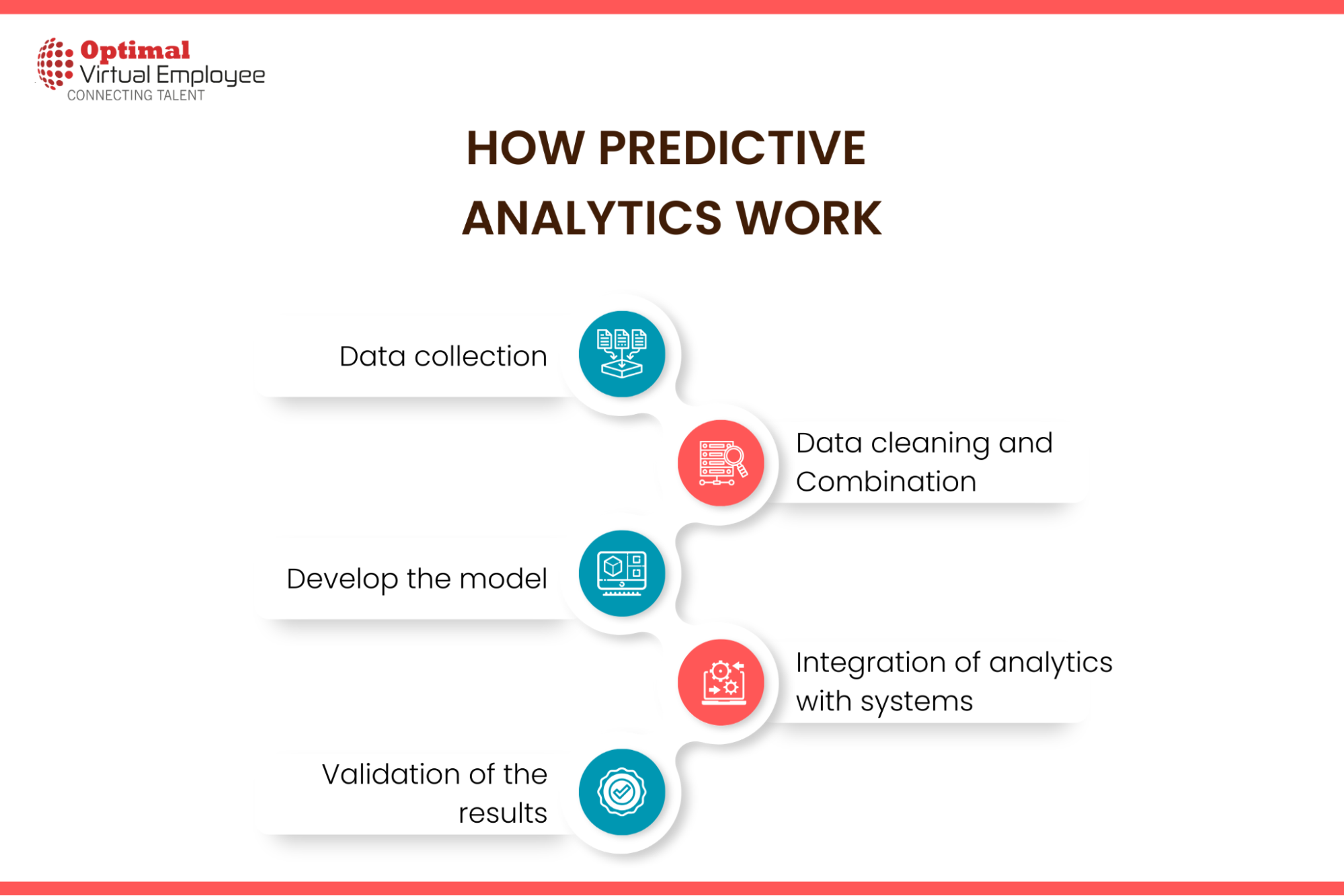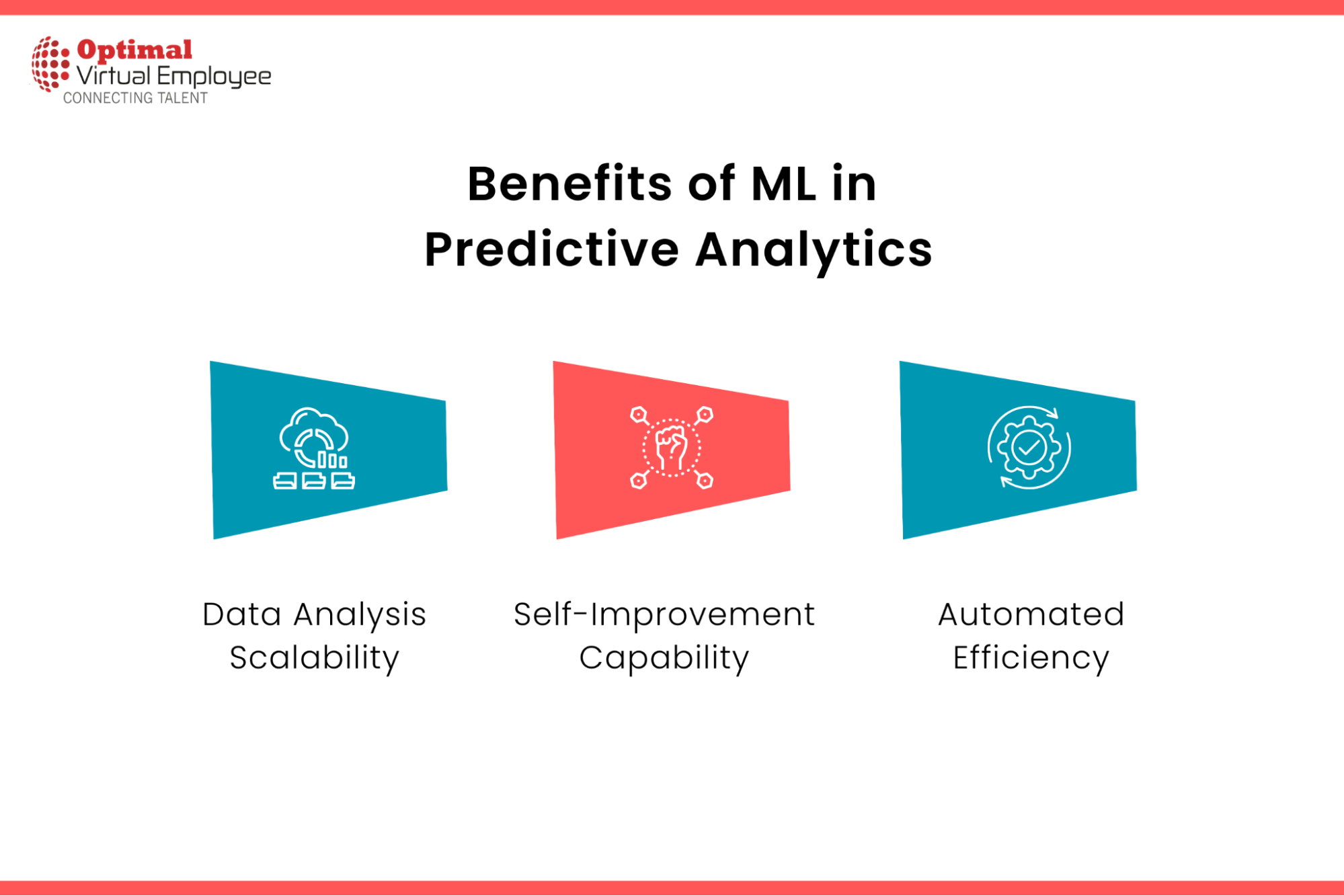Predictive analytics and decision-making serve as crucial instruments for data scientists, offering synergistic benefits when integrated. Employing predictive analytics allows companies to digest extensive data, generate analytical models, and yield insights into historical and current situations for precise future predictions. On the other hand, decision-making involves the collation of data, rigorous analysis, and reasoned judgment to pinpoint the best course of action for a given issue or context. By fusing predictive analytics with decision-making protocols, enterprises can develop more impactful and data-driven solutions.
What are Predictive Analytics and Decision Making?
Business professionals are increasingly turning to predictive analytics and decision-making processes to enhance the quality of their choices. Predictive analytics employs a blend of statistical methods, algorithms, and machine learning models to scrutinize both current and historical data, aiming to forecast future behaviors or occurrences.
In contrast, decision-making is the art and science of determining the most appropriate path to follow in specific circumstances.
When harmoniously integrated, these two methodologies can accelerate decision-making processes, offering particular advantages in areas such as customer engagement, market trend analysis, investment risk assessment, and long-term planning.
Essentially, predictive analytics simplifies complex issues into easily digestible metrics, enabling businesses to weigh their alternatives with more precision prior to executing any strategic moves. By mining historical and real-time data, such as consumer buying habits or longitudinal usage trends, businesses can glean actionable insights that help them make more informed choices in a complex and dynamic market landscape.
A well-crafted predictive model can unearth previously unnoticed patterns in customer data. When executed effectively, it offers valuable perspectives on how consumers might interact with a company’s range of products.
Moreover, an ideal predictive analytics model takes into account a variety of elements, such as individual customer preferences and overarching market trends. This multi-faceted approach empowers companies to gain a richer understanding of both current and future customer needs, thereby facilitating more intelligent, streamlined, and effective decision-making processes.
In summary, the focus is less on churning out numerical data and more on delivering actionable insights that would be unattainable without the support of digital transformation efforts anchored in Predictive Analytics Decision Making technology.
What is predictive analytics?
A widespread misunderstanding is that predictive analytics and machine learning are synonymous, which is not accurate. They do intersect in areas like predictive modeling, but they are distinct disciplines.
Fundamentally, predictive analytics employs a range of statistical methods, such as machine learning, predictive modeling, and data mining, to analyze both historical and current data for estimating future events. These could range from likely customer behaviors to potential market shifts. Predictive analytics serves as a tool to foresee future developments based on past and present data analysis.
In contrast, machine learning is a specialized branch of computer science that focuses on enabling computers to learn without explicit programming, as defined by Arthur Samuel in 1959. Originating from the field of pattern recognition, machine learning explores the idea that algorithms can be trained to learn from data and make predictions. As these algorithms grow increasingly intelligent, they can surpass their original programming to make remarkably accurate decisions rooted in data.
How does predictive analytics work?
Predictive analytics is fundamentally guided by predictive modeling and is more a methodology than a step-by-step procedure. It often works in tandem with machine learning, as most predictive models incorporate machine learning algorithms. These models can be trained over time to adapt to new data or variables, thereby providing the insights a business requires. In this sense, predictive modeling shares a considerable overlap with machine learning as a field.
There are essentially two kinds of predictive models: Classification models, which predict category membership, and Regression models, which estimate numerical values. These models are composed of algorithms that execute the data mining and statistical evaluations, identifying data trends and patterns. Software solutions specializing in predictive analytics usually come with built-in algorithms designed to construct predictive models. Within this context, these algorithms are termed ‘classifiers,’ as they discern the categories to which the data should be allocated.
The most commonly employed predictive models include:
Decision Trees:
Decision trees offer a straightforward yet robust approach to multivariable analysis. Generated by algorithms that segment data into branch-like subdivisions, decision trees categorize data based on the attributes of input variables. This helps elucidate the sequence of decisions someone might follow.
Regression (Linear and Logistic):
Regression remains a highly favored technique in statistical analysis. It is used to determine relationships between variables by uncovering critical patterns in extensive and varied datasets. Regression analysis helps understand how different variables correlate with each other.
Neural Networks:
Inspired by the functioning of neurons in the human brain, neural networks, also known as artificial neural networks, fall under the umbrella of deep learning technologies. They are particularly adept at tackling complex pattern recognition challenges and are highly valuable for analyzing voluminous datasets. Neural networks excel in capturing nonlinear relationships in data and perform well even when specific variables are not known.
Alternative Classifiers:
Time Series Algorithms: These algorithms plot data in a sequential manner and are valuable for projecting continuous variables over a timeline.
Clustering Algorithms: These algorithms categorize data into clusters that contain similar members, facilitating easier analysis and interpretation.
Outlier Detection Algorithms: Specializing in anomaly identification, these algorithms pinpoint elements, events, or observations that deviate from the expected norms within a dataset.
Ensemble Models: By combining multiple machine learning algorithms, ensemble models aim to achieve better predictive outcomes than any single algorithm could produce independently.
Factor Analysis: This technique is used to explore variability within data and seeks to uncover independent, hidden variables that influence observed variables.
Naïve Bayes: This classifier employs probability to predict a class or category based on a given set of features.
Support Vector Machines: These are supervised machine learning methods that utilize corresponding learning algorithms to analyze and identify patterns within data.
Predictive Analytics and Machine Learning
The Relationship between Predictive Analytics and Machine Learning
Let’s explore the relationship between machine learning and predictive analytics. While machine learning is employed within the realm of predictive analytics, the two are distinct and should not be used synonymously. Machine learning serves as a specific instrument for crafting predictive models, which are subsequently used for forecasting future events.
Another perspective is to consider machine learning as a specialized component of the broader field of predictive analytics. While predictive analytics utilizes an array of statistical and analytical techniques to generate forecasts, machine learning is just one such method within this larger framework. The key difference lies in the scope: machine learning focuses on the development of predictive models, whereas predictive analytics encompasses the broader application of these models for making future predictions. It’s worth noting that machine learning is not the only tool available for constructing predictive models; there are other methodologies and techniques as well.
Advantages of using Machine Learning for Predictive Analytics
Machine learning brings several advantages to the field of predictive analytics, such as:
Data Analysis Scalability: One of machine learning’s standout features is its ability to manage large and complex datasets effectively. Through large-scale data analysis using machine learning algorithms, it’s possible to identify patterns and correlations that might elude human analysts. This leads to more precise predictions and decision-making.
Self-Improvement Capability: Another notable benefit of incorporating machine learning into predictive analytics is its ability to adapt and refine its forecasts as new data emerges. The algorithms can be updated and retrained to improve accuracy and overall performance. Consequently, businesses can continually fine-tune their predictive models, achieving more accurate forecasts over time.
Automated Efficiency: After a predictive model is established, it can autonomously generate forecasts without requiring human input. This not only conserves time and resources for businesses but also minimizes the likelihood of human-induced biases and errors affecting the accuracy of predictions.
Common Machine Learning Techniques Used in Predictive Analytics
Various machine learning techniques are commonly employed in predictive analytics. Logistic regression stands out as a highly favored method for estimating the probability of a specific event occurring, based on one or more independent variables. Support vector machines and decision trees are also frequently used for data classification and rule-based decision-making.
Neural networks, inspired by human brain architecture, are another prevalent tool in predictive analytics. These networks excel at identifying intricate patterns and relationships within datasets to facilitate predictions. Deep learning, a specialized branch of machine learning that employs multi-layered neural networks, has gained considerable traction in recent times and has set new standards in a myriad of predictive analytics use cases.
Conclusion
From demystifying intricate data to equipping decision-makers with predictive insights, Machine Learning-aided Predictive Analytics has become a transformative force in the business world.
To sum up, we’ve discussed how Machine Learning amplifies the power of predictive analytics, its influence on decision-making, and the hurdles associated with this groundbreaking technology. By tapping into the potential of Machine Learning, businesses can make well-informed decisions, streamline operations, and gain a competitive edge.
Don’t overlook the chance to redefine your organization’s future. Seize the opportunities presented by Machine Learning in Predictive Analytics and steer your business toward success. Let’s jointly embark on this data-centric adventure and open up new avenues of possibilities!











